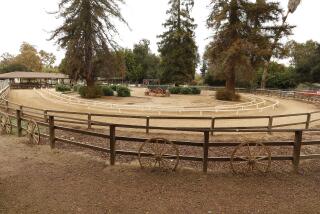Residents Demand Parks but Split Over Their Cost
Glendale officials last week took their first sampling of public opinion about city parks and it confirmed what they expected: Most residents agree that the city needs more parks, but are divided over who should pay for them and what they should be used for.
A three-hour hearing on Glendale’s park and land use offered a range of disparate and sometimes opposing views--from sports enthusiasts who want more soccer and football fields to people who favor landscaped mini-parks in dense residential neighborhoods.
The hearing was the first effort by the city to poll residents about park services, the need for more open space and the future of the city’s undeveloped hillsides, said Jim Glaser, Glendale’s planning administrator.
City officials earlier this year initiated a comprehensive plan to create urban parks, preserve undeveloped land as open space and develop stringent regulations for hillside development.
By the end of summer, the consulting firm of Thomas Gath Pittas Inc. is expected to issue recommendations for revising the General Plan’s Open Space, Conservation and Recreation Element, which has not been updated since 1972, Glaser said.
Many of the nearly 40 residents who attended the hearing generally agreed that the need for more parks is especially critical in south Glendale, where neighborhoods crowded with apartment buildings have little undeveloped land or open space.
Some questioned how the city would finance new parks, warning that despite a common desire for better recreation facilities, residents may not be willing to pay additional fees or give up other programs to support them.
“If you don’t provide facilities for kids to play their organized sports, they’re going to run off and join gangs,” said Dave Weaver, president of the Glenoaks Canyon Homeowners Assn. “My concern is where the trade-offs are going to be.”
But residents largely disagreed on the kinds of facilities most urgently needed. Some said they need more large, flat parks for organized sports, such as soccer, baseball and football programs for youths. Others said they want more scenic areas without sports facilities that would attract senior citizens and families.
Glendale has 29 parks covering about 250 acres, which serve a population of about 180,000 that ranges widely in age, economic status and ethnicity. The differences make designing park facilities difficult, consultant Jean Marie Gath said.
“It becomes sort of a matching-and-balancing act,” Gath said.
The next step for gathering public input will begin soon, Gath said. A citywide telephone survey, which will be conducted in English, Armenian and Spanish, will poll 1,000 residents about their use of parks, where they want more parks and whether they are willing to pay for them.
Residents will also be asked whether they support preserving undeveloped hillside land as open space by purchasing it from private owners, Gath said.
Many residents at the hearing urged city officials to develop strict regulations on hillside development that would protect sensitive ridgelines and limit construction on the remaining 1,540 acres of undeveloped, privately owned land in Glendale.
The City Council in March, 1990, imposed an 18-month moratorium on hillside development until guidelines could be revised. That ban, scheduled to end in October, is likely to be extended until the consulting team finishes its recommendations, Glaser said.
A city task force will help the consultants design the hillside guidelines. The consultants will be paid $200,000 for their work, he said.
More to Read
Sign up for Essential California
The most important California stories and recommendations in your inbox every morning.
You may occasionally receive promotional content from the Los Angeles Times.










